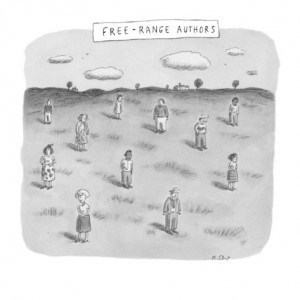Duncan Green's Blog, page 216
May 2, 2013
Is it time for a rethink on the definition of aid?
Crushed by my humiliation at the hands of Claire Melamed, it would just make matters worse to come back for another round of post-2015 jousting, so let’s move on.
I actually quite like blogging about meetings held under Chatham House rules, as they allow me to write about the discussion without worrying about who said what. And to take the credit for anything clever, of course.
So last week, I found myself in a heated debate on the future of aid, with a bunch of NGOs and aid boffins. The topic was ‘is it time for a re-think?’ Why? Because the aid world is changing:
- New donors, such as foundations, philanthropists and emerging economies such as China and India are starting their own aid programmes, often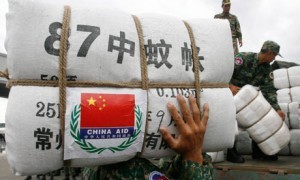 outside the traditional donor club of the OECD DAC
outside the traditional donor club of the OECD DAC
- Increasing diversity of sources of ‘financing for development’, from domestic taxation to remittances to private investment
- Austerity driving many traditional donors to cut aid, either overtly or sneakily, by trying to count lots of non-aid flows as aid, or both (see FT letter here). A reminder that in terms of its increasing aid budget, the UK is really an outlier these days – ‘we are talking in the vicarage, here’.
- The post-2015 discussions raising lots of questions about sustainable development goals and collective action on everything from climate change to tax havens, which have been traditionally fenced off from the aid discussion.
Underlying all this was a sense that the definition of aid corresponds to an old order (rich northern countries give cash for big push in the South to get public services functioning and the economy humming). That world has little to do with many of the preoccupations of modern development – fragile states and conflict, climate change, leaky financial systems, migration etc etc.
But does that mean aid needs to be overhauled? All were agreed that the current levels of aid, running globally at around $130bn a year, are a precious achievement, the only flow of resources aimed specifically at helping poor people, with a reasonably tight definition, making it easier to defend from dilution. Lots of talk of not throwing babies out with bathwater. (And tanks on lawns, heads in sand – mixed metaphors threatened to get seriously out of control.)
Which brought us to the political context – the march of the Austerians means that any decision to open up discussions on the definition of aid (which governments such as Netherlands and Germany are already doing) is much more likely to lead to a watering down/dilution of aid, with lots of other stuff being included – I pointed out that, in contrast to Pandora’s Box, the nasties will fly in when this one is opened.
Broadly, aid donors will want ‘what allows you to reach your aid target without spending any more money’, while aid recipients will want to keep everything separate, so additional cash for things like climate finance is not counted as aid. One old hand said ‘and the donors will win.’
Which made me line up on the ‘conservative’ side of the table – the risks are largely downside, so try and resist efforts to redefine aid and defend what you’ve got. Others felt that the debate was already happening, and we had no option but to engage.
Everyone was for improved data and transparency (who isn’t?) on non-aid flows, so that donors, governments and others could see what is already happening before allocating their cash (lots of praise for the new DFI/Oxfam Government Spending Watch database of how much poor countries are spending on the MDGs, with seasoned aid officials saying they had spent years trying to get this data out, without success). Another piece of good news is that Development Initiatives are working on an annual report on Investments to End Poverty, which documents all resources available for poverty eradication – watch out for it in September and see some of the material here.

you sure about this?
Lots of discussion on the 0.7 target, with the technocrats seeing it as arbitrary and weird, and the advocates seeing its use in driving government action, even in countries that haven’t endorsed it, like the US. Interesting suggestions that 1% of government spending (a penny in the pound) might make a more sensible and communicable target than 0.7% of Gross National Income.
As for the new southern aid donors, the wonks reckoned that they are not interested in targets, but are interested in what counts as aid – one cited Turkey which, when obliged to count it, found it was giving much more aid than it had realised, partly because it had assumed a narrower.
Other interesting discussions on ‘fair shares’ – how you could modify the 0.7 target to take account of a country’s stage of development, perhaps using the UN formula for assessing members’ contributions to its budget. Anyone done that?
Overall, I did feel that there is an institutional problem here – at some point the aid discussion needs to be taken out of the OECD, even though it’s been doing a pretty good job so far. Otherwise, it risks being seen as a project of the declining North, with minimal buy in from others. But would the UN (the obvious alternative) do a better job?
My conclusion? At this political moment, I think there is a real danger in trying to stretch the debate on aid to include everything that contributes to development (we wonks always like to do this – look at post-2015). Right now the test of any proposal should be ‘what is most likely to increase rather than reduce funds going from rich countries to poor countries for good purposes?’ For example, stretching ‘aid’ to include most peacekeeping fails that test badly - irrespective of all the good sense about security and development reinforcing each other. Better to try and keep the aid definition (and debates) tight and work on the rest in other fora – Government Spending Watch, tax havens, climate change etc. We won’t win them all – for example there is clearly substantial overlap between climate finance and aid, so insisting on ‘additionality’ is very unlikely to succeed, but I see little benefit in helping others prize open the Pandora’s Box of aid.
May 1, 2013
Post-2015 wonkwar continued: Claire Melamed on why it’s a Good Thing + your chance to vote
Claire Melamed responds to my ‘bah humbug’ opener on post-2015
I spend most of my working life thinking about post-2015 so this is a slightly nerve-racking experience. What if Duncan convinces me? Let me first respond to his arguments, then set out what I think is to be gained from the post-2015 circus… and then we’ll see if I’m still working on post-2015 at the end of it.
I’ll start with the magical thinking. Yes a lot of what’s being said in the name of post-2015 is a bit ‘if everything was nice everything would be nice’. But think of it this way: people everywhere, not just wonks like us – are getting involved in serious debates at national, regional and global level, about poverty, about politics, about economics and about the environment. We don’t know where it will lead yet. Some of it will lead nowhere. But don’t write off all that energy and commitment because it’s a bit unfocused, rather celebrate the fact that so many people want to get involved in political debate and action (even be, um, active citizens….).
In any case, that is about the campaign and the public debate, not the goals, and the two shouldn’t be confused. If the outcome is important, being annoyed at the tone and strategy adopted by campaigners has to be a reason to get in there and change that, not to walk away.
So is it important? Will a new agreement have any effect? It depends on what. If it’s a specific change – say a new law on land rights, or criminalisation of gender violence – in a given country you’re after, quite obviously you don’t work on any multilateral process. You work through national politics, if you’re a local organisation or in solidarity with those local organisations if you’re outside the country. Many organisations and individuals do just that, brilliantly.
But that’s not what we’re trying to do here. Both Duncan and I, and millions of other people over the years, have also taken part in campaigns, research and advocacy dedicated to improving the global context for those national politics – for example by improving global trade rules or forgiving debt. This is one of those. Multilateralism will never be the fastest or most certain route to national change, but it’s a contribution. Even if the changes are marginal in any given country, taken in lots of countries together that can add up to something quite big.
 Of course you can’t know in advance, for any agreement or institution, how those global changes are going to work out in any given situation. But you have to take a punt on the basis of (almost always partial) evidence, and go for it.
Of course you can’t know in advance, for any agreement or institution, how those global changes are going to work out in any given situation. But you have to take a punt on the basis of (almost always partial) evidence, and go for it.
And so to the evidence. Should, as Duncan suggests, post-2015ers have considered all the available options for multilateral instruments before embarking on this particular course? Well, the next time someone asks me to design a multilateral system from scratch, then of course I will do that research. Maybe we can do it together.
But this is not about fantasy multilateralism. Yes post-2015 is about goals, because that’s what’s on the table. That’s what governments, in the UN, in regional organisations, in bilateral forums, are negotiating. Other instruments are available – if it’s laws you want, have another shot at the WTO, or if it’s league tables, there’s always the HDI. They exist, they have an impact, and plenty of people work on them. But the political opportunity of post-2015 is about goals, not any of those other instruments.
So why do I (and, by the way, a large number of the world’s governments and the whole UN system, not really the ‘sidelines’) think it’s worth working on goals for post-2015? Apart from the impact on aid, which everyone seems to agree on – there are at least three other reasons to think that the current MDGs have done some good in the world, and therefore why it’s worth investing in a new agreement.
More and better information. The MDGs, and in particular the indicators linked to each goal and target, created a huge global effort to assess progress on the basis of commonly agreed metrics. Information has improved in every way since then. The common set of indicators agreed as part of the MDGs allowed us to compare countries to each other and over time. They created incentives to invest in data, and, probably, reduced the tendency to reach for GDP alone as the all-purpose indicator for human progress. And more data improved advocacy, policy making , and sometimes led to a race to the top between governments – all ways that this particular multilateral agreement has an impact at national level. A new agreement could do this for information on gender violence, or on employment, to take two examples of very important things on which the data is terrible.
More campaigning. There was campaigning before the MDGs and there would have been campaigning in their absence. But the combination of goals and targets have been used as an extra bit of ammunition for national campaigns – and again, been one small part of changes in national politics and policy. Advocates for education and for health services have probably been the keenest users of the MDGs. It’s rare to read a description of the campaign for free universal primary education in Kenya, for example, that doesn’t mention the education goal as one of the factors that helped push the politics in the right direction (pdf). Without the MDGs they would have had one fewer stick to beat governments with, and progress may well have been slower. Campaigners for universal health care, for example, think a goal or target on this would be helpful as they try to push policy in that direction in particular countries.
More and better consensus. In the 1980s and 1990s growth was king, income was the only thing that mattered, and, according to some of the architects of structural adjustment programmes, it was justifiable to actually make poor people’s lives worse in the short term in the name of ‘development’. The MDGs were the moment that the world agreed that this was not ok, and that social development, as defined in the goals, should be an equal priority for international efforts. A new agreement can make a move to achieving a similar consensus on inequality, for example, or on the need to make sure that we keep to within environmental limits. This stuff matters – look at how norms, and then laws and actions, on human rights have changed in the last 20 or 30 years.
to make sure that we keep to within environmental limits. This stuff matters – look at how norms, and then laws and actions, on human rights have changed in the last 20 or 30 years.
A post-2015 agreement is not going to change the world overnight. Nothing, sadly, will do that. We can’t know in advance exactly what changes it will bring, and to who, and how. It may all end horribly and pointlessly, and even if we get a good agreement, it will be a big and unwieldy thing, with an impact that’s felt through many channels over many years. But within the range of global processes that it’s currently possible to influence, this seems to me to be pretty good investment of my time. A thousand words later, I’m still convinced. You?
So over to you for the inevitable poll. As on the results one, I couldn’t think of suitably nuanced revealing questions, so let’s just see if you agree more with Claire, me both or neither. And I think I can assure you, the result will have absolutely no influence over the post-2015 process!
April 30, 2013
Anyone fancy a post-2015 wonkwar? Me v Claire Melamed on the biggest development circus in town
I’ve been good friends with Claire Melamed for ages, but recently we’ve found ourselves on opposite sides of the post-2015 debate. As ODI’s growth and inequality supremo, Claire is deeply immersed in the ever-proliferating discussions, whereas I decided early on that I had massive reservations about the whole process. So for your amusement (and who knows, perhaps enlightenment), we’ve decided to air our differences in public. I’ll kick off,
inequality supremo, Claire is deeply immersed in the ever-proliferating discussions, whereas I decided early on that I had massive reservations about the whole process. So for your amusement (and who knows, perhaps enlightenment), we’ve decided to air our differences in public. I’ll kick off,
Claire responds, and we hope that will produce a load of comments and a life and death struggle for the last word (which I shall of course win, because it’s my blog).
What’s my beef? The post-2015 discussion typifies the kind of ‘magical thinking’ that abounds in aid circles, in which well-intentioned developmentistas debate how the world should be improved. These discussions and the mountains of policy papers, blogs etc that accompany them, are often based on what I call ‘If I ruled the World’ (IRW) thinking. IRW, then I would do X, Y, Z – Rights for (disenfranchised group of your choice)! More Infrastructure! Better Data! Jobs!
The high/low point of this for me came last year, when I had to MC an interaction between 250 civil society lobbyists and the High Level Panel on post-2015 – we managed to squeeze about 80 interventions into the allotted hour of consultation, which produced a Christmas Tree (Claire’s term, much copied) of issues that had no chance of making it onto the final post-2015 agenda.uld do X, Y, Z – Rights for (disenfranchised group of your choice)! More Infrastructure! Better Data! Jobs!
But in any case, so what if they do? Because what is missing from this is any consideration of power and politics. What, after all, is the point of the post-2015 process, beyond creating (another) international forum for debating development? The MDGs were primarily about improving the quantity and quality of aid, and arguably they were quite successful in this. What is much less certain is the extent to which they influenced government policy (as in, persuaded governments to do things they wouldn’t have done otherwise). Rich country governments have systematically ignored MDG8 (the one on global partnership), while the evidence of ‘traction’ on developing country governments is really rather flimsy (more on that here).
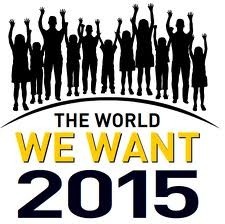
Who exactly is 'we'? And what if 'we' don't agree?
In particular, I was astonished to find that there is no rigorous research comparing the traction exerted on national decision-making by the various different kinds of international instrument (laws, conventions, regional league tables, norms, academic exchanges). So the post-2015 circus is busily debating what ‘should’ happen without first establishing whether/how its conclusions will affect national decision-making. And this blind spot is massive – you can go entire days in the bubble of post-2015 discussions without ever hearing anyone mention any other international instrument on development or rights.
When I raised this at a recent OECD post-2015 conference, Claire wearily replied ‘There isn’t an answer – there is no single thing that we can say ‘if you do it like that, it will have traction’. It is very hard to predict beforehand which mechanisms for any given agreement will get traction.’ So that’s a relief then, can we just ignore these annoying questions about actual impact and get back to decorating the Christmas Tree?
That really isn’t good enough. It is certainly possible to know much more than we do about attribution through more rigorous qualitative research. For example, in-depth interviews with policymakers could investigate the traction exerted by a range of external and domestic forces on their decisions. I have yet to locate such research. (And rocking up and asking developing country ministers leading questions like ‘how have the MDGs affected your decision-making?’ most definitely does not constitute rigorous research.)
So if it can’t generate national traction, what could the post-2015 process achieve?
- Aid still matters, albeit to a diminishing group of countries, and post-2015 could bolster the case for aid (under siege from the Austerians), and continue to improve its quality
- Intellectual hegemony matters, so general debates on development are always good (hey, they’re my bread and butter)
- It may help break the logjam on collective action on everything from climate change to migration (but don’t hold your breath)
But by ignoring the primacy of national politics and avoiding serious political economy questions on traction, it feels like the post-2015 process has perhaps inadvertently relegated itself to the sidelines – a bit player in a drama that is increasingly national and beyond the reach of the aid industry.
perhaps inadvertently relegated itself to the sidelines – a bit player in a drama that is increasingly national and beyond the reach of the aid industry.
Over to you Claire (and for the sake of my peace of mind, and a natural urge to run away and joint the post-2015 circus, this is one argument I would really like to lose).
April 29, 2013
What is Social and Solidarity Economy and why does it matter?
UNRISD Deputy Director Peter Utting introduces the theme of his organization’s big conference in May
Having had my professional and political interests shaped during the somewhat heady days of the 1980s in Sandinista Nicaragua, I’ve long been interested in the potential and limits of collective action—of people organizing and mobilizing through associations, unions, cooperatives, community organizations, fairtrade networks and so on. The Sandinista “revolution” soon gave way to the “neoliberal” 1990s. As in much of the world, collective action went on the backburner or assumed new forms via NGO networks and identity politics. Fast forward two decades and we are witnessing a significant rebound in collective action associated with workers, producers and consumers. Whether in response to global crises (finance and food), the structural conditions of precarious employment or new opportunities for cultural expression and social interaction afforded by the internet age, old and new forms are on the rise.
The term social and solidarity economy (SSE) is increasingly being used to refer to a broad range of organizations that are distinguished from conventional for-profit enterprise, entrepreneurship and informal economy by two core features. First, they have explicit economic AND social (and often environmental) objectives. Second, they involve varying forms of co-operative, associative and solidarity relations. They include, for example, cooperatives, mutual associations, NGOs engaged in income generating activities, women’s self-help groups, community forestry and other organizations, associations of informal sector workers, social enterprise and fair trade organizations and networks.
In addition to diversification, we see signs of upscaling. SSE appears to be moving beyond its niche, peripheral, project or community-level status, and becoming more significant in terms of macro-economic, commercial and social-economic indicators, as charted in a 2011 ILO report:
In the UK some 62,000 social enterprises contribute £24 billion ($37.1billion) to the economy and employ 800,000 people.
In Europe; 2 million SSE organizations represent about 10% of all companies.
In India, over 30 million people (mainly women) are organized in over 2.2 million self-help groups; and the country’s largest food marketing corporation, the cooperative organization Amul, has 3.1 million producer members and an annual revenue of $2.5 billion.
In Nepal, 5 million forest users are organized in the country’s largest civil society organization.
The global fairtrade market has grown to €4.9 billion ($6.4 billion) and involves some 1.2 million workers and farmers producing certified products.
Mutual benefit societies provide health and social protection services to 170 million people worldwide.
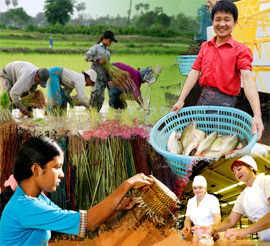 Beyond the statistics, why the growing interest in SSE? Theory and anecdotal evidence tell us that such an approach can be a key mechanism through which poor or disempowered people in society gain greater control over resources and decision-making processes that affect their lives. Economists and political scientists have long espoused the benefits that can derive from co-operation or group behaviour in terms of addressing market failures and making demands on more powerful entities. Sociologists have emphasized other virtues related to social cohesion, identity and job satisfaction.
Beyond the statistics, why the growing interest in SSE? Theory and anecdotal evidence tell us that such an approach can be a key mechanism through which poor or disempowered people in society gain greater control over resources and decision-making processes that affect their lives. Economists and political scientists have long espoused the benefits that can derive from co-operation or group behaviour in terms of addressing market failures and making demands on more powerful entities. Sociologists have emphasized other virtues related to social cohesion, identity and job satisfaction.
But the contemporary interest in SSE also relates to the fact that we are living in an era that seems to be crying out for new models of development. Not only have we to deal with multiple and recurring crises (finance, food and energy), but there is growing recognition that today’s normative agenda has to be much more encompassing. Some may hark back to the glorious days of post WWII “embedded liberalism”, of welfare states protecting citizens and corporations upholding some principles and practices of “decent work”. But for all its benefits and ongoing pertinence, this model ignored some key issues related to gender equality and environmental pollution, and is struggling to reproduce itself in contexts of economic liberalization and informalization of labour markets.
The discussions and debates taking place in the build-up to 2015—the date that has been set for a new or revised set of Millennium Development Goals (MDGs) and Sustainable Development Goals (SDGs)—signal that the old development formula of economic growth plus social protection is no longer sufficient. Other aspects, associated with the realization of rights, empowerment, equality, women’s care burden, and transformations in production and consumption patterns, need to be factored in. The theoretical attraction of social and solidarity economy lies precisely in the ways it lends itself to addressing these multiple dimensions of development. It simultaneously fosters economic dynamism, social and environmental protection and socio-political empowerment.
But achieving in practice what is promised on paper is another ballgame. SSE’s recent revival has been, organic, a largely grassroots phenomenon. And therein lies the rub—in two respects. First, collective action needs to connect at multiple scales via networks, movements and alliances. If the SSE is to be sustained, enabled and scaled-up on terms compatible with its values and objectives, action cannot remain local; it must cohere at other levels (municipal, provincial, national, regional and global) where governance, advocacy and politics play out. Second, in order to expand and really move beyond the fringe, the SSE must interact far more with states, for-profit enterprise and global value chains. Such interactions inevitably generate tensions and dilemmas given differences in development priorities and approaches, as well as differentials in bargaining power.
For a graphic illustration of these tensions, look no further than fair-trade. In 2011 there was a major split in the international fair trade movement as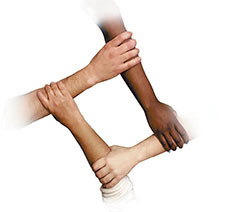 the US labeling organization (then known as Transfair USA) left the international federation, FLO (since renamed Fairtrade International).
the US labeling organization (then known as Transfair USA) left the international federation, FLO (since renamed Fairtrade International).
Closer integration with powerful market actors underpinned the split. Fair-trade had expanded significantly over the years but quite different approaches were being promoted. The US organization leaned towards engagement with corporations like Starbucks and was keen to source from large commercial tea and other plantations, something not possible under FLO rules. Such relationships with big business had implications for the price that buyers were prepared to pay to small farmers and the quality of sustainability standards. Meanwhile, various labeling organizations and producer groups that were key stakeholders in FLO wanted to stick to the original principles and practices of fair trade, based on smallholder empowerment and agro-ecology.
What immediate policy implications stem from this reflection? Governments and international organizations clearly need to be paying far more attention to the SSE, and question how its developmental and emancipatory potential can be realized. And they should also be asking themselves whether current priorities or biases in policy approach in the field of development are not missing, or indeed undermining, what could be a major new game in town. These include the tendency to focus on
i) individuals or entrepreneurship, rather than groups,
ii) economic, rather than political, empowerment;
iii) idealize the integration of small producers and communities in global value chains; and
iv) social (and environmental) protection, rather than equality and emancipation.
It is these and other issues we’ll be debating at UNRISD’s conference on Potential and Limits of Social and Solidarity Economy from 6-8 May at the ILO in Geneva. Please join us!
Peter Utting is writing in his personal capacity.
April 26, 2013
In Boston, New York, Washington and Ottawa for the next two weeks, if you want to come and chat/ buy a book
I’m heading off this weekend for (almost) the last leg of the FP2P promo tour. I’m doing quite a few public lectures/conversations if anyone out there wants to 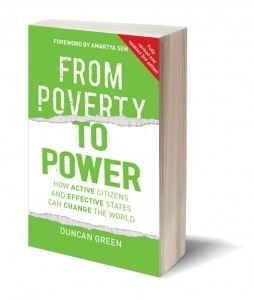 come along. If you want to meet up on the margins/for a beer, let me know. Here’s what we know so far. If there’s no link that means it’s either not a public event or I haven’t got the URL yet – I’ll add a couple more links when we get them. The updated list will be on the FP2P website.
come along. If you want to meet up on the margins/for a beer, let me know. Here’s what we know so far. If there’s no link that means it’s either not a public event or I haven’t got the URL yet – I’ll add a couple more links when we get them. The updated list will be on the FP2P website.
Boston
29 April, The Heller School, Brandeis University, Boston, 12.15pm-1.45pm. More details
29 April, Harvard University, Boston (private event)
New York
2 May, Columbia University, NYC, 1:00pm-2:00pm. More details
2 May, UN Women, NYC (private event)
3 May, UNICEF, NYC (private event)
3 May, UNDP, NYC (private event)
3 May, The Rockefeller Foundation, NYC (private event)
6 May, SIT Grad Institute, Washington DC (private event)
7 May, Society for International Development, Washington DC Chapter, 10:00am-12:00pm. More details
7 May, Oxfam America, Suite 600,1100 15th St NW, Washington DC,12.30pm-2.30pm
7 May, World Affairs Council, University of California – Washington DC, 6:30pm-8:00pm. More details
8 May, Centre for Global Development, Washington DC (private event)
8 May, World Bank, Washington DC (private event)
9 May, USAID, Washington DC (private event)
9 May, Johns Hopkins University,1619 Massachusetts Ave, Washington DC,12:30pm-2:00pm
9 May, GW University, Elliott School for International Affairs, Washington DC, 5.30pm-7:00pm. More details
Ottawa
10 May, University of Ottawa, 2.30pm-4.30pm. More details
As for the rest of you, there may be the odd interruption to service, but I’ll try and keep blogging while I’m on the road. First up next week, a friendly wonkwar – me v Claire Melamed on the post-2015 circus.
April 25, 2013
Incantations, inclusive growth and the illusory ‘we’: whatever happened to politics in the post-2015 process?
French development guru Pierre Jacquet laments some of the gaps in current debates on the ‘post-2015’ successor to the MDGs
It is altogether amazing how wishful and incantatory discussions on global issues have become. We seem to be content with passionate statements about what “we should”, “we need”, “we must” consider and do. “Inclusive growth” may well have become the new global development objective to worship, and it is hard to disagree with all the statements that go with it and sometimes resemble a laundry list of great things to do. Have we reached a sort of “end-of-History” development approach in which we believe that everyone agrees on some final objectives and we collectively know how to get there? Or is it, rather, that we try to exorcize our impotence and helplessness, while buying ourselves a conscience?
To avoid any misunderstanding, let me stress my full support to all the objectives that “we” should achieve! However, I find this display of self-indulgent and well-intended thinking almost totally irrelevant. My objections are twofold.
First, who is this “we”, as in “we should” or “we need”? Presumably, there are several such “we”s, and “they” might not all agree. Or “they” might have other priorities. For example, I believe that gender equality is a crucial aspect of inclusive growth and an objective very much worth pursuing, for ethical, social, economic as well as cultural and other reasons. Yet, seminar participants saying for example “we should promote gender equality” are generally not the main or unique actors. It thus amounts to talking at length about what others should do, which may seem a pointless incantation (I’ll qualify this below, though).
Second, these objectives seem so obvious and (ethically at least) incontestable – and they are so repeatedly discussed and endorsed – that the real question is not whether “we” should pursue them, but why they have not yet been achieved!

Motherhood, apple pie, and post-2015?
Answering that question is much more difficult. It is tempting to explore the idea that we did not know enough to be able to do the right thing, and so we turn to diverse sophisticated studies to get knowledge and inspiration on how to do things better. This is the altogether well-established technocratic approach to life. I do not want to dismiss it too easily, nor to underestimate its merits in providing useful evidence-based guidance from serious evaluations. But it comes as a complement to something at least as fundamental, which belongs to the realm of the political economy: there are power issues and relations out there; there are scores of individuals with interests, and the collusion of these interests shapes individual and collective actions. If all these objectives we discuss at such length have not been met, it is likely to be because they were not seen as a priority by most of the relevant actors, notwithstanding any lip service to the contrary.
Hence, my own recommendation would be that global seminars (and the post-2015 process) focus more on the process of political and social change rather than on desired outcomes. Influencing the process is indeed possible, and brings me to qualify my earlier critique: mobilizing agreement around objectives helps attract attention, both global and local, and may change the political environment. However, instead of brooding over broad objectives and principles, one effective way to focus attention is to provide facts and data and report on experiences, in order to shape a better evidence-based diagnosis and precisely define the space for action.
What is measured and reported cannot be ignored, so that describing and measuring are powerful instruments of political influence. For example, facts and data on income distribution are bound to feed a discussion on whether the current situation is compatible with an acceptable vision of social justice; facts and data on the quality of public service delivery, a crucial element of social inclusion, will lead to questions about how to organize that delivery in more effective ways and how to reach out to people who may be excluded. Instead of trying to define social inclusion through a laundry list of objectives, a better way to push the agenda is to document various aspects of social exclusion and their costs.
But the final judgment about whether the situation is acceptable or not is bound to be specific to local politics. A major point, here, is that it would be naïve to believe that there is a spontaneous demand from policy makers and politicians for academic knowledge and evidence to formulate policies. Unfortunately, the connection between knowledge and policies is not a simple, linear process. It is rather chaotic and political as well. The interest of policy-makers in what good research can bring needs to be built through a sense of urgency that will re-shape local priorities and demand action. This is why good facts and data are so crucial in the process.
Finally, “we” need “them”, I mean the people described by our statements. Diagnoses and recommendations need to be owned locally, rather than formulated by outside, foreign observers, however well intentioned. For example, the debate on social protection in developing countries is often cast in terms of resources: do they have resources to develop an effective system, can development assistance help with additional resources, etc. But since no amount of resources will allow governments to do everything that might be useful, the central question is how the allocation of scarce resources is decided, which points to the establishment of local priorities.
The political process is bound to be run by local actors. Data collection and fact finding and their use in the local debates will also be more credible and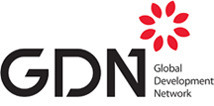 convincing if local actors are fully involved: the role of NGOs is emphasized and known; empowering local academics and researchers is also crucial.
convincing if local actors are fully involved: the role of NGOs is emphasized and known; empowering local academics and researchers is also crucial.
“We” as actors can help by building their capacity. My own organization, the Global Development Network (GDN) was created to promote research capacity building in economics and social sciences, both for the sake of increasing the stock of relevant knowledge, but also to enhance the quality and density of the local debate on development policies. Research gives access to debate and ownership. My central message, here, is that “we should” (I’m not immune…) focus on what we can do, and let (and help) “them” decide for their own good. Yet, beyond my own ranting, I believe that pressure from the international debate, including the worshiping of global objectives and the adoption of good principles and guidelines, can help. What is missing is a more conscious and deliberate attempt at promoting empowerment and ownership, through a better understanding that the governance of globalization “needs to” be better anchored in local and regional politics.
Pierre Jacquet is President of the Global Development Network, and a former Chief Economist and Director of Strategy at the French Development Agency (AFD)
April 24, 2013
Make Inequality History? What would change if we focussed on inequality rather than poverty?
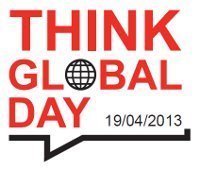 showing surprising staying power within the post-2015 process and elsewhere. Inequality gabfests usually involve violent agreement that inequality is indeed a Bad Thing, lots of evidence for why this is the case, and polite disagreements on what inequality we should target first – often along the lines of ‘because inequality is really important, we should all work on X’, where X just happens to be the thing that person works on anyway. A more retro variant involves ritual combat between supporters of equality of opportunity (aka American Dream) v equality of outcome (Socialist Paradise). Cynical, moi?
showing surprising staying power within the post-2015 process and elsewhere. Inequality gabfests usually involve violent agreement that inequality is indeed a Bad Thing, lots of evidence for why this is the case, and polite disagreements on what inequality we should target first – often along the lines of ‘because inequality is really important, we should all work on X’, where X just happens to be the thing that person works on anyway. A more retro variant involves ritual combat between supporters of equality of opportunity (aka American Dream) v equality of outcome (Socialist Paradise). Cynical, moi?But in Brussels, I had a more difficult, but interesting job: what, if anything, should we do differently if our focus is on inequality rather than, say ‘getting to zero’ on poverty? So let’s imagine. It’s 2015, the UN has signed off on a shift in focus from poverty (MDGs) to inequality (post-2015). True, the commitment is a little vague (hey, this is the UN we’re talking about), but now NGOs and official donors are charged with the task of turning this into a viable campaign and lobbying exercise. What might a Make Inequality History campaign look like?
Firstly, as poverty reduction starts hitting the hard core of chronic poverty, both poverty and inequality campaigning will have to look more at targeting excluded groups (disabled, mental health, elderly, ethnic minorities.) For some people, the debate stops right there.
But compared to poverty, there could be a number of additional and pretty fundamental conceptual shifts
Inequality is all about relationships (a single individual can’t be unequal!), meaning a greater emphasis on power and politics within/between countries
Inequality is a universal challenge – within countries, it involves everyone; internationally it obliterates North-South distinctions
That in turn means ‘whole of society’ interventions become more important: aid agencies would do more on norms (do children have rights?); prejudice and discrimination (eg against women, indigenous, disabled); disabling environments (eg violence; market failures that exclude poor people);
Inequality is structural – what kind of economy do we have/want? What’s balance between disequalizing sectors (finance, extractives, capital intensive agriculture) and equalizing sectors (smallscale ag, labour intensive manufacturing, smallscale retail)
In terms of specific themes:
Taxation is the standout issue. A focus on the distributive imapct of how governments raise reveneue would be a necessary complement to the traditional focus on how they spend it. At the moment, there’s real potential for reforming the global system of tax evasion. But at national level, many tax systems are going in a regressive rather than progressive direction.
More focus on ratchet mechanisms that drive up inequality – eg hyperinflation or shocks when the rich typically have more access to smoothing mechanisms (credit, social protection)
Would there be a focus on ceilings as well as floors, eg on land ownership (South Korea) or Oxfam’s recent cheeky proposal for an end to ‘extreme wealth’?

time to change the title (and maybe lose the mullet)?
The shift to a more overtly political and relational approach to development might be welcome by campaigners (if not by their fundraisers), but it won’t be easy. INGOs and (even more) official donors would have to learn to strike a fine balance between becoming more explicitly engaged on issues of power, politics and redistribution, and being thrown out for meddling in internal politics. There are ways to do this:
Work with and through local partner organizations and curb any messianic tendencies in our own staff
Focus on the ‘enabling environment for redistribution’ (promoting norms and values for social cohesion, rule of law, governance, access to information, freedom of expression), rather than specific redistributive campaigns that might prompt a greater backlash
Build the state’s capacity to redistribute (eg domestic resource mobilization): this includes supply (training, technical assistance), demand (eg citizens watchdogs) or a mixture of both
Develop skills in ‘convening and brokering’, ensuring the voices of poor people and their organizations are at the table by bringing together dissimilar players to build trust and find collective solutions
Which all makes me think that Make Inequality History faces some pretty big challenges:
Compared to specific campaigns, society-wide interventions are a lot harder to communicate and inspire people about: ‘what do we want? New norms!’
A shift to a more universalist and political project could seriously damage levels of political and financial support for aid agencies, where it is currently based on a rather unthinking (and disingenuous) ‘aid is about helping people, not politics’ narrative
Many of these things demand skills more than cash – aid, with its pressure on a small number of aid agency staff to disburse large chunks of funding, may even be counterproductive to the long-term, subtle political engagement required to tackle the structural roots of inequality. This was definitely the trickiest question for those in the room in Brussels – can aid agencies find a way to spend the money, and still free up brain time for the more politically sophisticated, long term, rooted work needed to confront inequality? If not, is the conclusion that more money is a mixed blessing? Or can we divide up our approaches into aid-dependent low income countries (business as usual) and non-aid dependent unequal countries (new inequality lens, needing less money and more knowledge)?
If engaging in domestic redistributive processes proves just too politically risky and complex for aid agencies with large budgets and limited attention spans. What about a renewed focus on global inequalities – collective action problems such as climate change, tax havens, trade,
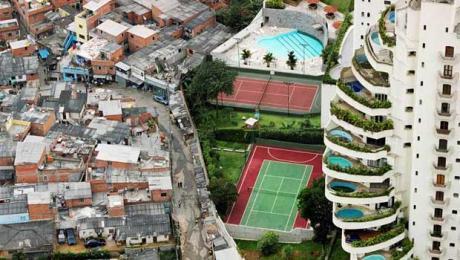 intellectual property rights, migration? But here the obstacles to change often seem even greater (contrast dynamic national progress with multilateral paralysis on numerous issues).
intellectual property rights, migration? But here the obstacles to change often seem even greater (contrast dynamic national progress with multilateral paralysis on numerous issues).Conclusions? This is still churning around in my head, but it feels to me like MIH would be right but difficult, banging up against all kinds of institutional constraints including communications, fund-raising and coalition-building. A three tier approach might well emerge:
Make Poverty History: ‘Business as usual’ poverty reduction in low income, aid dependent countries
Make Inequality History: A more politically engaged MIH in middle income and other fast-growing countries with falling aid dependence
Make Externalities History: A global campaign for collective action on climate change, tax havens, intellectual property, arms trade etc
So over to you. With limited resources, and taking into account both the opportunities and the obstacles to success in each, which of the three approaches should aid agencies adopt? And to avoid the ‘both, and’ syndrome, you’re only allowed to vote for one option.
And here is the undoubted highlight of the Brussels show, ‘India’s first youtube star’ Wilbur Sargunaraj with the catchiest song I’ve heard on poverty and redistribution. OK, the only song…..
More Wilbur videos on the Why Poverty? Site – well worth it
April 23, 2013
Merit, Privilege or Slumdog Millionaires? Income Inequality and Social Mobility
In memory of Sebastian Levine, who liked to read these posts.
This post is written by Ricardo Fuentes-Nieva, Oxfam’s Head of Research (twitter @rivefuentes)
In Danny Boyle’s movie Slumdog Millionaire, the young character wins a large pot of money against all odds. The movie is a fantasy tale for all practical purposes. The hero knows the responses posed to him in a quiz show through a number of coincidences and lucky breaks. It was his only chance to become wealthy.
What type of societies give better, more just chances to everyone? What is the connection between opportunity and socio-economic disparities? There are, at the risk of being simplistic, two broad sources of inequality: inequality resulting from individual entrepreneurship and effort (I’ll call it merit inequality) and the inequality that reproduces privilege and elite capture (I’ll call it privilege inequality).
A simple way to discover whether inequality is actually a result of merit is to think how far effort and hard work can take us. I recently heard Kaushik Basu, the new Chief Economist at the World Bank, detail an anecdote about this during a meeting with civil society people in London. When Basu visits his home city of Kolkata he goes for long walks and sometimes he wanders around a privileged district that stands in sharp contrast with the nearby slums. The close proximity of the two vastly different lifestyles ensures that slum dwellers also visit this district. Then Basu said, to the best of my recollection: “it is not fair to tell a kid in the slum that by working hard he will be able to achieve the wealth needed to live in that neighbourhood.”
It is a candid story that got the attention of all people present in the meeting. It makes a powerful point. What Basu was pointing at is that perfect social mobility does not exist. Basu focused on the immorality of a development narrative that promotes aspirations that cannot be attained – the slum kid that will not become a rich mogul. I want to focus on the existing rigid class structures and how they limit opportunity.
Equality of opportunity is a central tenet of modern societies, but it implies that family characteristics should not have a strong influence on the opportunities someone faces throughout life. Empirical evidence shows that is not the case. There is a strong correlation between children’s chances and their parents socio-economic status. A book aptly titled “Persistence, Privilege, and Parenting” put it like this: “The abundant evidence in the economic, demographic, and sociological literature of the association between parents’ and children’s social positions makes it very clear that children’s chances for a good life are highly dependent on their social origins or socioeconomic status”
Social mobility is far from perfect – where you’re born will have some influence on where you end up. But what is the actual correlation between inequality and social mobility? It turns out it’s rather high. Several academic papers (look here, here and here) show this. Take, for instance, recent research by Miles Corak. In this graph, Corak plotted the Gini coefficient (a standard measure of inequality) against “intergenerational elasticity between fathers’ and sons’ earnings” (or how much someone’s income is determined by their parents’). In Denmark, for instance, a country with a low Gini, only 15 percent the a young adult’s income today is explained by their parents’; in Peru, where the Gini is amongst the highest in the world, two-thirds of what someone earns today is related to what their parents earned in the past. Alan Kruger, a former senior official in Obama’s administration and professor at Princeton, dubbed this relationship “The Great Gatsby Curve” (a movie with Leonardo Di Caprio is coming if you don’t feel like reading the book). The rich are different from you and me. And so their offspring are too.
Figure: Like father like son? Parents’ earnings influence income of offspring, and more so in countries with high inequality.
 Note: Income inequality in the horizontal axis, persistence of income across generations in the vertical one.
Note: Income inequality in the horizontal axis, persistence of income across generations in the vertical one.
Source: M Corak (2012) Inequality from generation to generation: the United States in Comparison.
A recent debate on The Economist site shed more light on the issue. In a blog post, Francisco Ferreira from the World Bank showed the relationship between opportunity and mobility. Here’s the graph.
You can only climb the social ladder if you have opportunities
Note: persistence of income across generations in the horizontal axis, inequality of economic opportunity in the vertical one.
Source: Brunori, Paolo; Ferreira, Francisco H. G.; Peragine, Vito. (2013) Inequality of opportunity, income inequality and economic mobility : some international comparisons
Countries where economic opportunity is low also present low levels of mobility – Norway is a mobile society where there is low inequality of opportunity, while Brazil, for all its progress, still shows a rigid society with higher levels of inequality of opportunity. The indicator Ferreira and co-authors use in their research (inequality of economic opportunity index) is not without flaws but it’s a solid attempt to capture how much someone’s ability to participate in the economy is determined by circumstances outside their control – characteristics you cannot change easily (race, parent’s education, sex and the like). Ferreira and his co-authors conclude: “The evidence reviewed suggests that an important portion of income inequality observed in the world today cannot be attributed to differences in individual efforts or responsibility. On the contrary, it can be directly ascribed to exogenous factors such as family background, gender, race, place of birth, etc.” Their evidence indicates that privilege inequality trumps merit inequality.
Why? Because privilege persists across generations through difference in access to education, health and social and professional networks and it starts very early in life. This is the connection between income inequality, inequality of opportunity and social mobility. In countries with high income inequality, you only have opportunities if your parents had them too. Ferreira explains “as the rungs of the ladder grow further apart, it gets harder for people to climb up (or move down). Conversely, countries with institutions that promote a level playing field, and redistribute income or opportunity, may also promote mobility”.
The evidence that income inequality limits our control over our destiny is strong. We know something about the dynamics of the class divide. There are some examples of increased mobility throughout history in Britain and the US. As “…in both America and Britain the effect of high (or low) incomes in one generation lasts for at least two more. Yet [Long and Ferrie’s] study also suggests it is possible to break patterns of immobility. Although American and British mobility rates had converged by the middle of the 20th century, America’s social order was considerably more fluid than Britain’s in the 19th century. The past has a tight grip on the present. But in the right circumstances, it can apparently be loosened. “. So it is possible to change the level of mobility in society.
We need to understand better how to loosen those circumstances to make societies more fluid but we know that inequality hampers it. The higher the inequality level in societies, the farther we are from that ideal that with hard work we can achieve what we set our minds. Then, like in Slumdog Millionaire, only an implausible array of coincidences allows people to move up the ladder. How can we support the narrative that says hard work and effort will really improve poor people’s relative position in society when we know that with growing inequalities it becomes much harder?
Tomorrow, I wonder what the aid biz might actually do differently as a result of all this renewed focus on inequality
April 22, 2013
Government Spending Watch – a new initiative you really need to know about
I’m consistently astonished by how little we know about the important stuff in development. Take the Millennium Development Goals – the basis for innumerable aid debates, campaigns, and negotiations. A large chunk of the MDG agenda concerns the size and quality of public spending – on health, education, water, sanitation etc. So obviously, the first thing we need is to know how much governments are spending on these things, right?
innumerable aid debates, campaigns, and negotiations. A large chunk of the MDG agenda concerns the size and quality of public spending – on health, education, water, sanitation etc. So obviously, the first thing we need is to know how much governments are spending on these things, right?
Well no actually, because we don’t have those numbers. Until now. Oxfam has teamed up with an influential and well-connected NGO, Development Finance International, which advises developing country governments around the world. Working with a network of government officials, DFI has pulled together and analysed the budgets of 52 low and middle income countries (With another 34 to follow). The result is a new database, called Government Spending Watch, (summary of overall project here) and a report ‘Progress at Risk’, previewed in Washington last Friday in a joint DFI/Oxfam America event to coincide with the IMF and World Bank Spring meetings. The full report won’t be ready ‘til May, but an initial draft exec sum is available, and here’s what it says.
The data cover seven sectors (agriculture/food, education, environment and climate change, gender, health, social protection and water/sanitation), from 2008 to 2015 (including medium-term forecasts). They examine planned and actual spending, disaggregated by types (recurrent and capital), and sources of funds (government revenue or donor funding). There are some major gaps (see map), so the first call is for donors (who are often the worst culprits) and governments to collect and publish more and better data.
The report looks separately at countries with and without IMF programmes (although attributing the differences to the IMF is tricky, and the report avoids doing so). Headline findings are:
Most countries have been increasing revenue and spending as a % of GDP, but this is now going into reverse
The sources of government finances have shifted from grants to loans, including more expensive domestic borrowing, raising fears about growing debt burdens (although no new debt crisis is imminent)
Countries with IMF programmes have raised less revenue, are cutting deficits faster and have seen less positive trends in MDG spending. Agriculture and health spending are now much higher as a percentage of GDP, and education and social protection spending are rising faster in non-IMF countries. Other MDG sector spending is stagnating compared with GDP or total spending.
For all MDGs, the vast majority of developing countries are spending much less than they have promised or than international organisations have estimated is needed. Only one third of countries are meeting any education or health goals, and less than 30 per cent are meeting agriculture and WASH goals. Trends have been even less positive for gender and sustainable development.
Some of the spending has been funded by rapidly growing aid – especially in education, health, WASH and agriculture. Progress in these areas is threatened as OECD aid flows are now declining in real terms, and are increasingly moving away from MDG sectors to infrastructure and growth.
In most countries, actual spending is substantially less than the amounts announced in budgets (see table). This is particularly true in the health, agriculture and WASH sectors, reflecting delays in donor funding, and absorptive capacity problems in sector ministries and decentralised government agencies.
Types of spending show two worrying patterns. Some sectors (WASH and agriculture) are dominated by investment, raising the need to increase recurrent spending dramatically to maintain buildings and equipment. Others (education, health and social protection) are dominated by recurrent spending on wages and supplies. Especially if donors reduce budget support, which funds much recurrent spending in many countries, governments will need to make even greater revenue efforts to maintain recurrent spending and keep delivering progress.
If the excitement around last week’s prelaunch is anything to go by, this is going to be a really important initiative. According to report author and DFI boss Matthew Martin:
“We had conversations with officials from about 20 IDA countries about their relative performance in terms of spending and transparency and all of them were anxious to see the full data and report, and to improve their performance. Senior donor government officials were also energised about being able to use these data to see country spending inputs for the MDGs and for the post-2015 framework.
Major global campaigns on education and health were anxious to see and use the data. The DC development research community (Brookings, CGD, IMF, World Bank) as well as USAID, MCC and the African Development Bank were very excited by the data and want to organise further seminars after the full report is published and consider using the data for their own research and policymaking.
We also had great conversations about potential partnerships with the International Budget Partnership (who run analysis and campaigns on budget transparency and accountability), and the BOOST team in the World Bank (who help countries produce much more detailed geocoded data and would like to code it for the MDGs).
All in all, an amazing week: it has felt like standing on a snowball which is rolling faster and getting bigger every day – we start again with the New York academic and UN community next (i.e. this) week.”
Looking ahead, citizens and social movements in poor countries will now be able both to see what their governments are promising and delivering, and to compare that with other countries in the neighbourhood. International bodies will be able to track the extent to which warm words translate into cash on the ministerial table. Internationally, Oxfam will certainly be using the database as a vital new tool to help local citizens and civil society actors ensure their governments actually deliver the goods.
In addition to scaled up advocacy and campaigns, the plan now is for GSW to expand the database to cover more countries and years, and to publish regular updates. But to do that we will need to find funders and advocacy partners. Please form an orderly queue……
April 19, 2013
Learning the Lessons: Why is change NOT happening in the response to hunger crises?
I know I go on all the time about ‘how change happens’, but often in development the important question is ‘why doesn’t change happen?’, and we need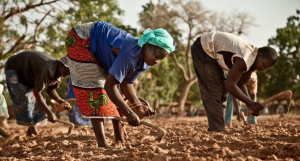 to get better at answering it. On Tuesday Oxfam published Learning the Lessons, an analysis of the response to the 2012 Sahel food crisis, which affected some 18m people across 9 countries. It’s a serious piece of work, drawing on interviews with 30 external bodies – donors, governments etc, other published research, focus group discussions with affected communities and perspectives from civil society.
to get better at answering it. On Tuesday Oxfam published Learning the Lessons, an analysis of the response to the 2012 Sahel food crisis, which affected some 18m people across 9 countries. It’s a serious piece of work, drawing on interviews with 30 external bodies – donors, governments etc, other published research, focus group discussions with affected communities and perspectives from civil society.
Compared to the ‘too little, too late’ response to previous crises in the region in 2010 and 2005, the report finds some improvements: early warning systems had improved and raised the alarm earlier, and governments in the region reacted in good time – Niger, for example, appealed for support six months earlier than it did during the 2010 crisis.
But there were still problems with governments, donors and the aid system. Governments in the region still lack the financial and technical capacity to really be able to lead. As for donors:
‘There was still disagreement about the likely severity of the crisis. Some donors, such as the European Community’s Humanitarian Office (ECHO), acted earlier than in previous years, but overall, donor funding was no more timely than before. By the beginning of July 2012 and the peak of the crisis, the UN appeal remained just under 50 per cent funded.’
This really matters: 5.6 million people didn’t get the seeds and tools they needed in time to prepare for the 2012 harvest cycle.
Interestingly, the report sees the roadblock as conceptual, and argues that this can be overcome by changing the way we think about such crises to emphasise the concept of ‘resilience’ – very much the current buzzword in a lot of development circles. ‘Learning the Lessons’ reckons a ‘resilience lens’ would allow donors to:
- Develop a shared understanding of vulnerability to food insecurity so that support is targeted to the poorest and responses can be launched rapidly;
- Break down barriers between humanitarian and development actors so that long-term and emergency programmes effectively support each other;
- Invest in strengthening the capacity of national and local actors so that governments can deliver large-scale, sustained support to their citizens.
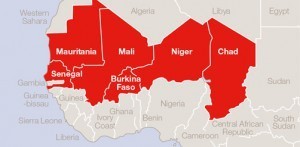 I must admit I was initially sceptical that the answer to such a profound failure is a new buzzword. But actually, I think the authors may be on to something.
I must admit I was initially sceptical that the answer to such a profound failure is a new buzzword. But actually, I think the authors may be on to something.
The most useful framework I’ve found for understanding the roots of inertia (aka ‘why change doesn’t happen’) is the ‘3i’ model of ideas, institutions and interests. A combination of these three underlies the kind of paralysis we’ve seen in the Sahel response.
Institutions: there is still a deep division between the ‘humanitarian/emergency’ and ‘long term development’ wings of the aid business. This is reflected in funding structures, which are completely different for the two silos. The polarization makes it hard to take a long-term approach to reducing the vulnerability to the inevitable future crises.
Interests: if you work in an aid agency, there are clear risks to responding early to a crisis – what if the rains come, you are accused of crying wolf etc? In any case, your political pay masters often only start banging the table when the grim TV images start to roll (by which time it is often too late, and certainly much more expensive, to respond). There is also still something of a macho ‘I’m here to save lives, get out of my way’ approach to humanitarian work which can all too easily brush aside national governments and local knowledge that are crucial to understanding the long-term roots of crises, and building institutions to deal with future ones. National governments need to be at the heart of efforts to address food insecurity, but that is likely to threaten the power relations of the status quo,
Ideas: The institutional silos reflect a crippling conceptual dichotomy. Cyclical crises such as those affecting the Sahel really can’t be described as ‘emergencies’, in that they are predictable and regular. But the underlying thinking in the aid business is still ‘is that an emergency, or is it long term development? Do we send in the engineers or the economists?’
One of the things I’ve noticed about climate change is that it is a ‘disruptive idea’. Disruptive ideas can’t be fitted into existing entrenched mental and organizational frameworks, and so often prompt violent rejection, but also the possibility of paradigm shifts. Because climate change doesn’t ‘belong’ to any existing camp, it makes it easier to bring people together (development and environment, for example) to think differently about how we respond to it without prompting accusations of turf wars and interference. Is ‘resilience’ also a disruptive idea, with the potential to bypass the humanitarian/development divide?
organizational frameworks, and so often prompt violent rejection, but also the possibility of paradigm shifts. Because climate change doesn’t ‘belong’ to any existing camp, it makes it easier to bring people together (development and environment, for example) to think differently about how we respond to it without prompting accusations of turf wars and interference. Is ‘resilience’ also a disruptive idea, with the potential to bypass the humanitarian/development divide?
I’m sure there is a big literature our there about the characteristics and impact of disruptive ideas. Any links appreciated.
Duncan Green's Blog
- Duncan Green's profile
- 13 followers


